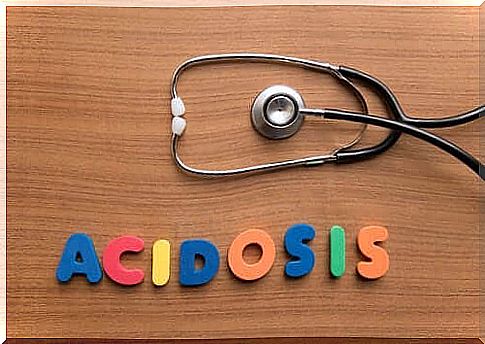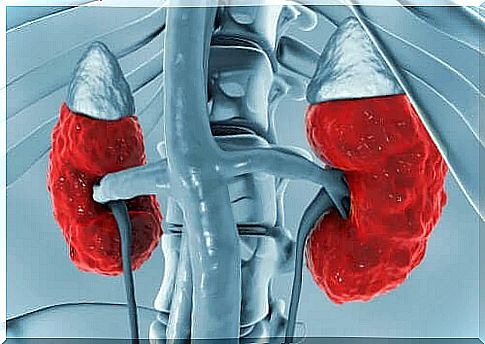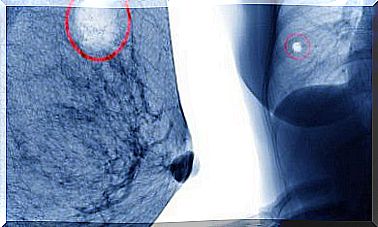Causes Of Hyperchloremic Renal Acidosis
Renal acidosis is characterized by a decrease in the capacity of the tubules to reabsorb bicarbonate from glomerular filtration.

Hyperchloraemic kidney acidosis occurs because of a great loss of baking soda in the body. Also, the kidneys do not remove enough acid from the body.
This condition is characterized by a reduction in the ability of the tubules to reabsorb bicarbonate from glomerular filtration. This then leads to hyperchloraemic metabolic acidosis.
Its prevalence is unknown. However, drug-induced distal renal tubular acidosis (pRAT) is relatively common. In addition, isolated hereditary acidosis is very rare.
Symptoms of hyperchloremic renal acidosis

Symptoms of hyperchloremic kidney acidosis depend on the underlying disease or condition. This condition causes rapid breathing, drowsiness or confusion. It can also lead to shock and even death.
At first, it manifests itself in very basic urine because of the unabsorbed bicarbonate. There is also growth retardation as well as reduced bone mineral density due to hyperchloraemic renal acidosis.
In some cases, hypokalaemia may occur and sometimes symptoms of periodic paralysis appear. However, rickets and osteomalacia are due to vitamin D deficiency and lack of phosphate reabsorption.
The causes
Hyperchloraemic renal acidosis can be caused by kidney diseases such as distal renal acidosis and proximal renal tubular acidosis.
It can also occur in cases of poisoning with acetylsalicylic acid, ethylene glycol or methanol. In addition, it can appear in the event of intense dehydration.
On the other hand, this disease can be acquired or inherited, recessive in most cases, or dominant. Acquired acidosis is caused by a mutation in the SLC4A4 gene.
As for it, the dominant acidosis is caused by mutations in an unidentified gene. The proximal mound reabsorbs about 80% of the filtered bicarbonate load, but a defect in the latter results in the loss of bicarbonate.
Certain drugs can also be the cause of the development of acquired kidney acidosis.
Diagnosis of hyperchloremic renal acidosis
Unlike patients with distal renal acidosis, those with proximal renal acidosis retain the ability to lower urine pH below 5.5.
In order to diagnose the disease, it is necessary to demonstrate the absence of bicarbonate reabsorption. The diagnosis is validated through a bicarbonate evaluation test.
During this examination, there may be an excessive increase in urinary bicarbonate excretion as well as urine pH as plasma bicarbonate increases above the renal threshold.
It is also necessary to exclude other hereditary proximal tubulopathies. For example, oculo-cerebral renal syndrome, Dent’s disease as well as glycogen storage diseases due to a deficiency of GLUT2.
Blood gas and electrolyte analysis may be used as laboratory tests to confirm hyperchloraemic renal acidosis.
In addition, a basic metabolic panel is also recommended, which consists of a group of blood tests that measure sodium and potassium levels, kidney function and other chemicals. The pH of urine, ketones in blood and urine as well as lactic acid levels are in turn assessed.
This set of tests can also help determine if the cause of acidosis is a respiratory problem or a metabolic problem.
Treatment of renal acidosis

Treatment for hyperchloremic renal acidosis depends on the cause of the disease. In fact, hereditary proximal acidosis requires lifelong bicarbonate replacement therapy.
To carry out this treatment, a large amount of bicarbonate is necessary in order to be able to regulate the physiological bicarbonate.
In some cases, diuretics of the thiazide family are used at a rate of 25-50 mg per day. For example, hydrochlorothiazide. This is useful for improving the reabsorption of bicarbonate and thus reducing the amount of bicarbonate needed.
Plasma potassium levels should also be monitored. Indeed, in some cases, the administration of a mixture of sodium bicarbonate and potassium salts is necessary.
Normally, if the disease is drug-induced, it is reversible upon discontinuation of drug administration. With the right treatment, the prognosis for this disease is good.









